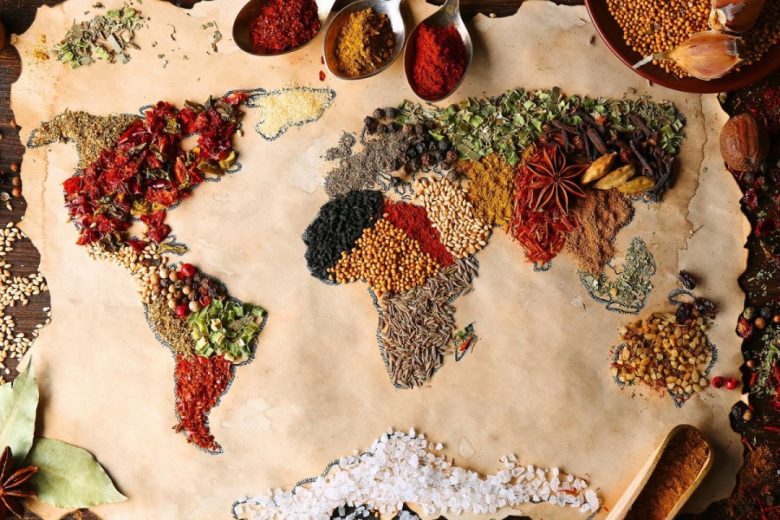This article seeks to shed light on how local food systems respond to globalization by reviewing five case studies from Human-Environment Observatories3, an international research network dedicated to environmental research.
Globalization refers to the free flow of goods, ideas, and culture across borders. This has had an enormous effect on cuisines around the world as globalization causes recipes to adapt to new ingredients or techniques introduced into their repertoires.
Adaptation
Globalization is altering food systems around the globe. No geographical area remains immune from nutritional and dietary transitions that promote chronic diseases, forcing local food systems to adapt by redistribution, streamlining or replacing of outlets as well as working together, er with produc of local foods – yet these changes must take into account traditional food cultures while being balanced against them.
Cultural adaptation of cuisines is determined by many factors, such as migration and the mixing of ingredients and cooking techniques in different regions. When these elements enter new regions, they can blur culinary borders to produce delicious fusion dishes; furthermore, such changes can have profound impacts on local food cultures by upholding traditions while offering consumers new tastes, nutrition, and health options.
Adaptation is a delicate balance that requires careful thought and understanding of globalization’s effects on food cultures. Although adapting can be challenging, many communities are showing resilience and adaptability by working to rejuvenate traditional food systems while teaching their members about the significance of culinary heritage.
Research by our group shows how Covid-19 pandemic-related challenges can have signCOVID-19ramifications on local food initiatives in terms of supply, distribution and sales. To gain an understanding of their adap,tation during this pandemic period, we surveyed local Quebec farmers selling through short and direct food supply chains and conducted an interview to gauge their responses; analysis identified 6 key adaptations by farmers related to distribution: redistribution, streamlining replacement collaboration farm adjustment outlet adjustment
Integration
The fusion of different culinary traditions.ns results in exciting new flavours and cooking techniques that inspire indivflavorso try various ingredients and dishes, broadening their culinary horizons. However, this trend must be balanced against protecting local food cultures.
Food globalization has allowed for greater access to nutritious ingredients, enabling people from developing nations to enjoy higher standards of living than before and leading to a reduction in extreme poverty since 1990.
Globalization of food has had numerous advantages, not least of which is its decreased costs – making it more accessible and affordable to both developed and developing country consumers alike. With this increased variety of available foods as well as consumer tastes; many individuals are now more open to trying cuisine from other cultures.
Localization refers to the process by which foreign elements are altered to fit within a particular cultural environment. An example would be how fast-food chains tailor their menu items according to local tastes and cultural expectations – for instance McDonald’s Maharaja Mac in India and KFC’s rice b,owls in China are two such efforts that allow companies to reach more customers while still upholding their brand identities.
Localization
Local food systems (LFSs) have garnered considerable attention as an approach to revitalising rural economies, decreasing dependencrevitalizingmarkets and supporting ecological sustainability. Such in,itiatives have often been presented as counterpoints to globalization by emphasizing community participation in creating social, civic and environmental benefits beyond food production, and consumption.
As much as we may wish for our food systems to become more localized, localization should also take into account how it might alter a region’s food culture. With globalization bringing greater access to ingredients and cuisines from across the world, cultural exchange can facilitate culinary fusion that threatens distinct cultural identities through food in regions that lack sufficient means of producing their own produce.
Previous conceptualizations of LFS ofneglected to take account of regional context when describing food systems. Industrial agricultural regions like eastern England or central Italy’s Abruzzo region, for instance, can often be perceived as lacking local food development due to productivist agriculture that creates an inauthentic foodscape. Yet this paper challenges this perception by showing that LFS can thrive even in places with strong commodity production and strong essentialized food culture – suggesting that the distinction between globalization and localization may be more complex than previously assumed.
Globalization
Cultures around the globe boast diverse and beautiful culinary traditions. From India’s spicy curries to Japan’s subtle flavours, each culture has their own special way oflavorsng food. Globalizatitsas opened up these diverse culinary traditions even further so that people from different backgrounds are starting to taste dishes from other cultures more frequently.
Globalization enables companies to find lower-cost ways of producing products for consumers, thus expanding consumer choice. Globalization has helped reduce poverty in many countries; its first wave began during the 19th century thanks to advances in technology such as steamships, railroads and telegraph systems; its second wave began duri,ng the 1980s due to international trade agreements.
However, it can be challenging to balance global influences with local food preservation. Cultural appropriation risks exist that could result in the loss of valuable food knowledge and techniques.
Transport networks facilitate disease transmission and facilitate illegal trade activities such as human trafficking and poaching, making globalization even more detrimental than before. With globalization often coming with serious adverse side-effects for local food cultures, it is cruciaside effects be taken to preserve them.




